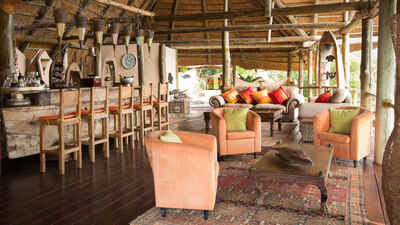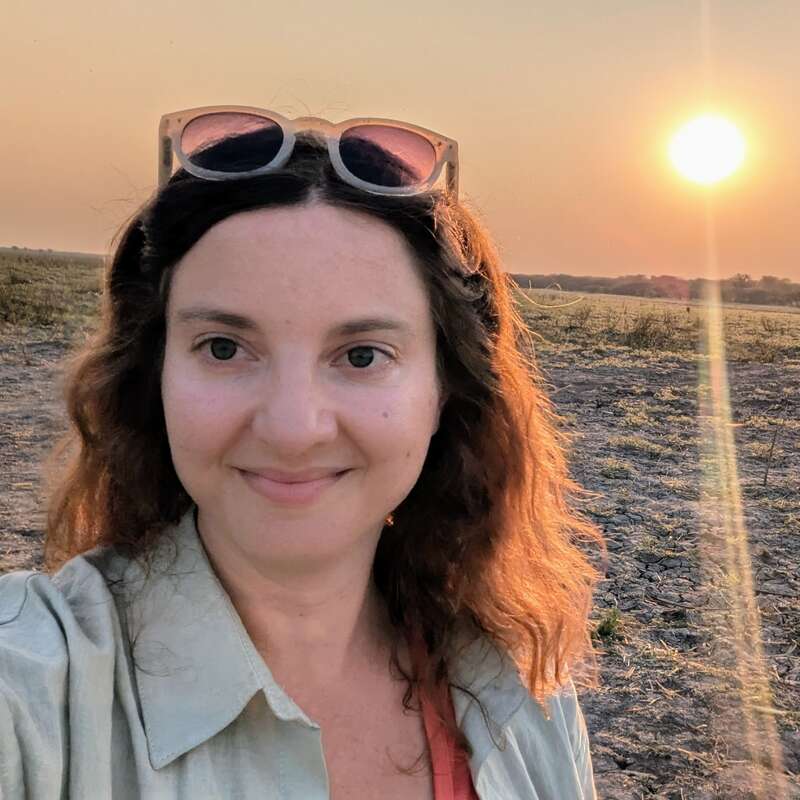About Lupita Island Lodge
Lupita Island Lodge is secreted on the private 45-hectare Lupita Island, part of the only archipelago in ...
... Lake Tanganyika, in western Tanzania. Reached from the remote fishing village of Kipili, west of Katavi National Park and south of the Mahale Mountains, it sprawls across the top of the island, looking out over the lake, and with a wide range of beach and island activities.
Lupita Island is different from your typical “beach stay” – in part because of the unique aspects of freshwater Lake Tanganyika, and in part for the remoteness and complete flexibility of a stay here. As it is owner-run, it is homely and welcoming, with a bit of a quirky, gently chaotic feel, but rather than detracting this adds to the memorable nature of a visit. Lupita may not be the most straightforward lodge to get to, but this adventure playground offers the whole package: friendly staff, great food, beautiful surroundings, and as much – or as little – to do as you wish.
Our view
Lupita Island is different from your typical “beach stay” – in part because of the unique aspects of freshwater Lake Tanganyika, and in part for the remoteness and complete flexibility of a stay here. As it is owner-run, it is homely and welcoming, with a bit of a quirky, gently chaotic feel, but rather than detracting this adds to the memorable nature of a visit. Lupita may not be the most straightforward lodge to get to, but this adventure playground offers the whole package: friendly staff, great food, beautiful surroundings, and as much – or as little – to do as you wish.
Accommodation
10 cottages
Children
Great for 7+
Open
1 Dec to 31 Oct
Activities

Boat trip

Cultural excursion

Fishing

Kayaking

Self-guided walking

Snorkelling
Traveller reviews of Lupita Island Lodge
1 real, un-edited reviews from Expert Africa's travellers.
Arrived 10 Oct 2022, 3 nights
"Lupita Island Lodge review"
Overall rating: Excellent
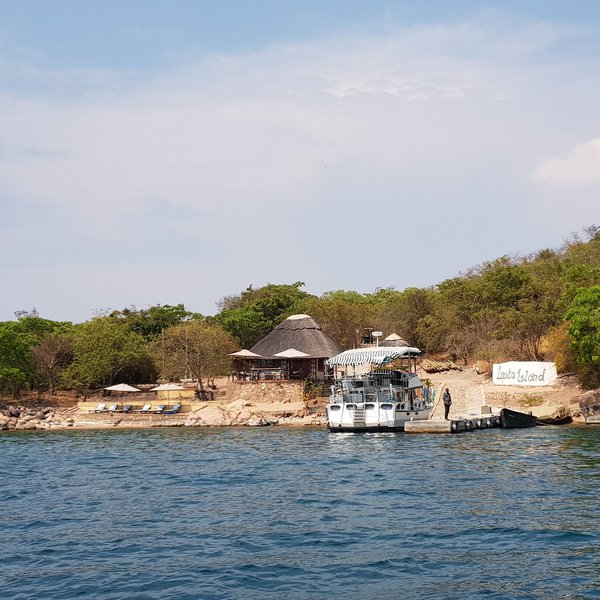
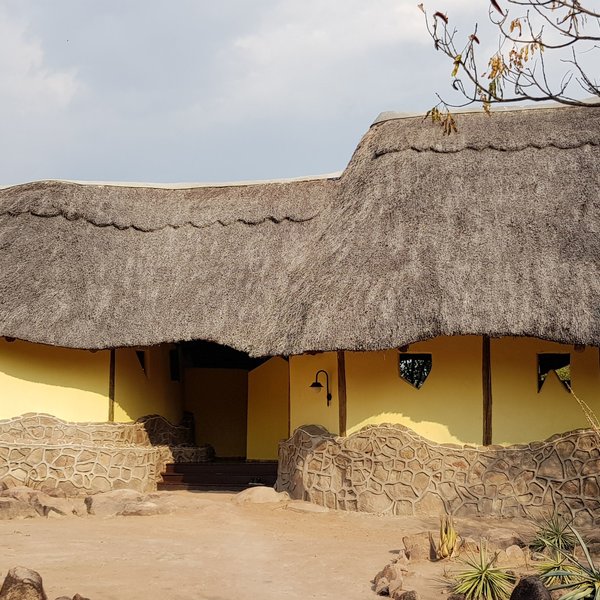
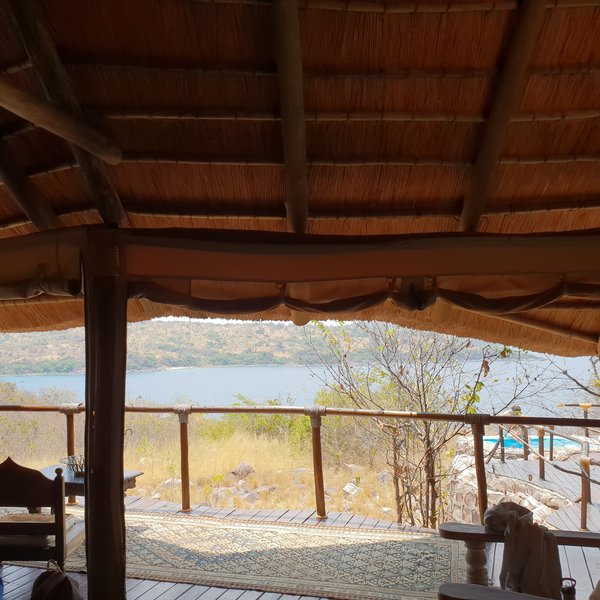
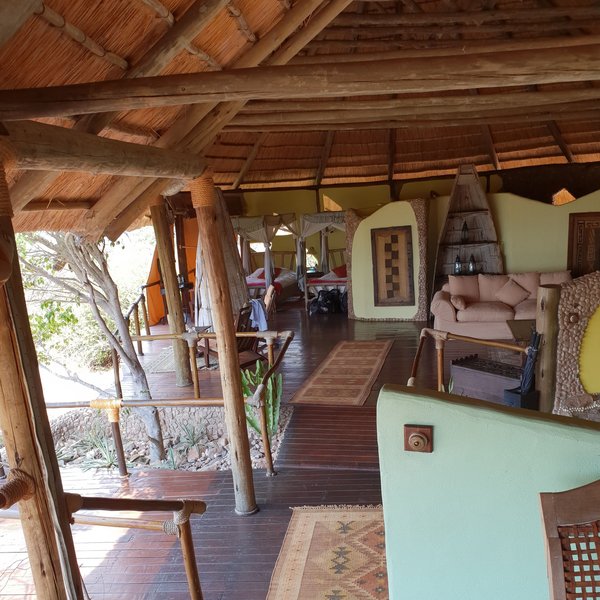
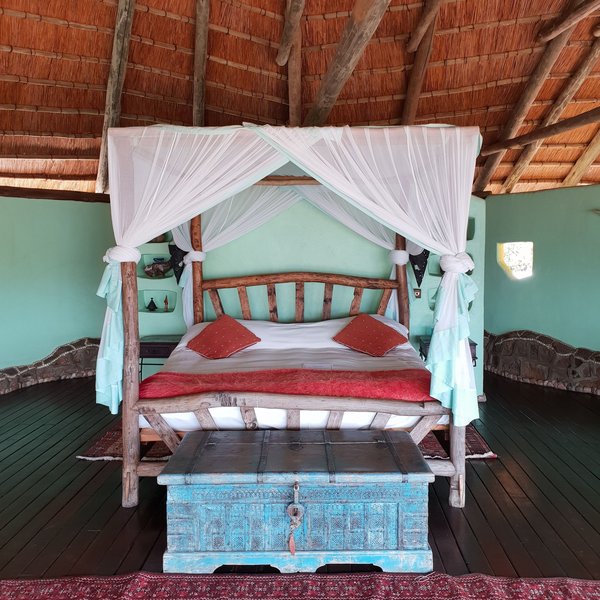
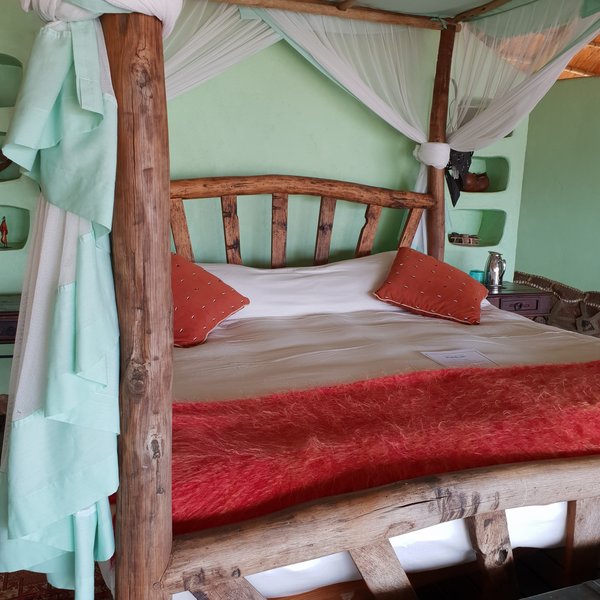
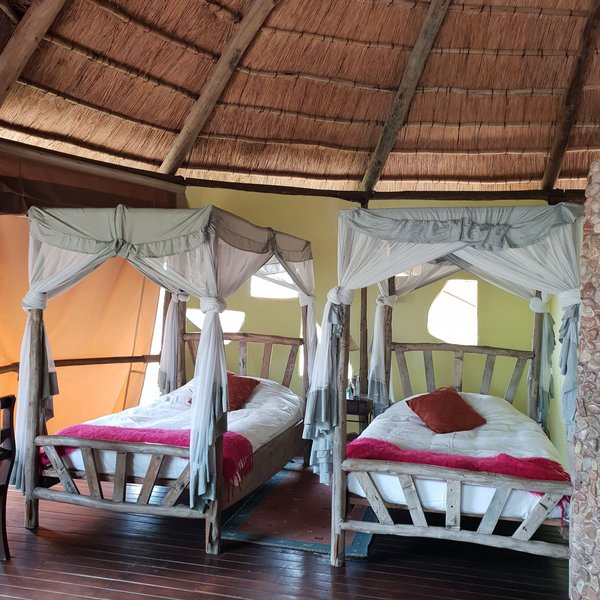
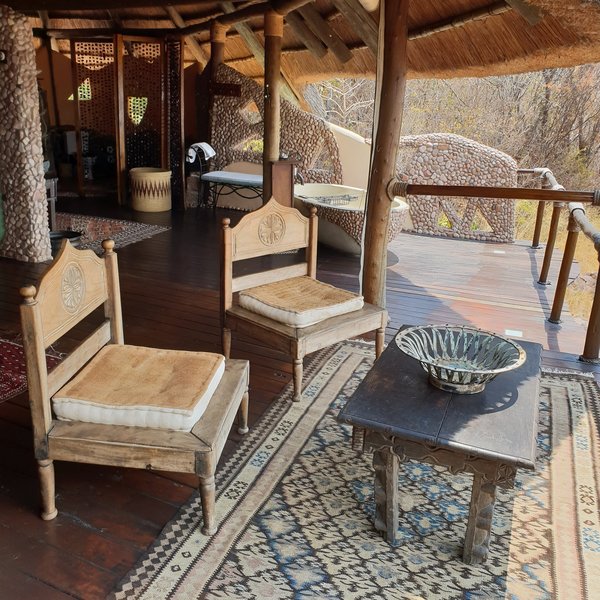
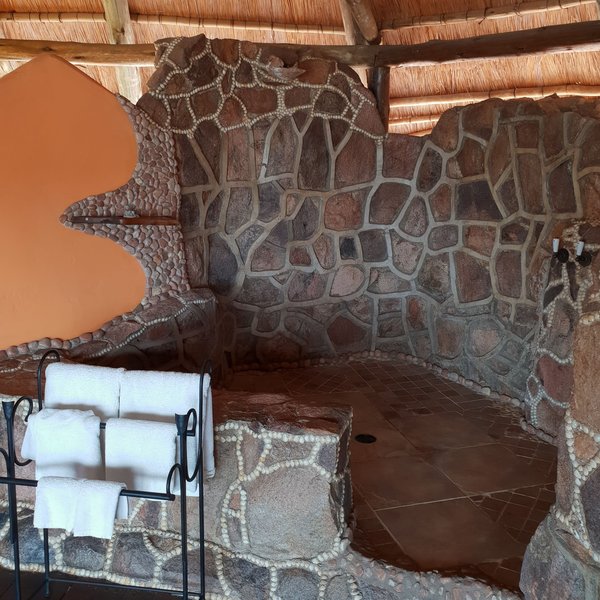
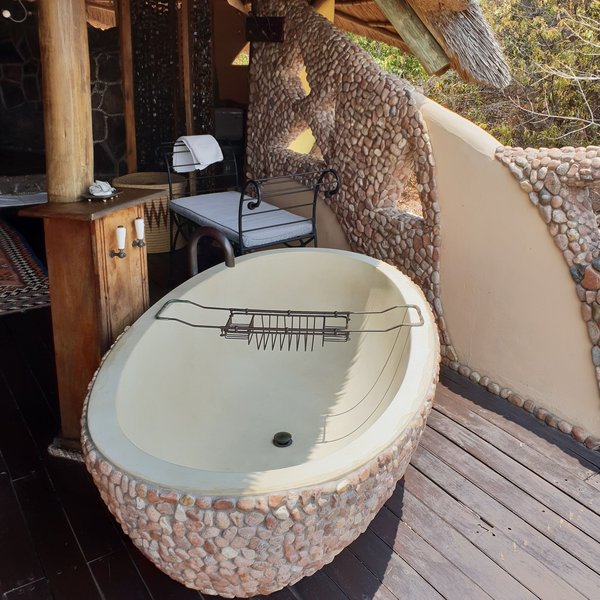
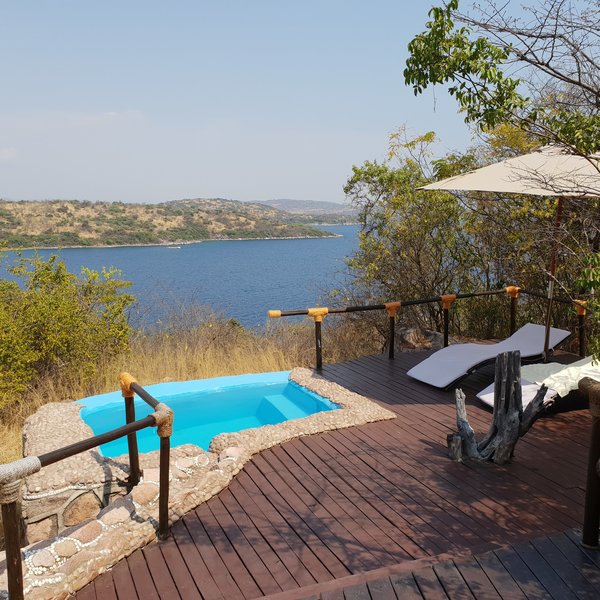
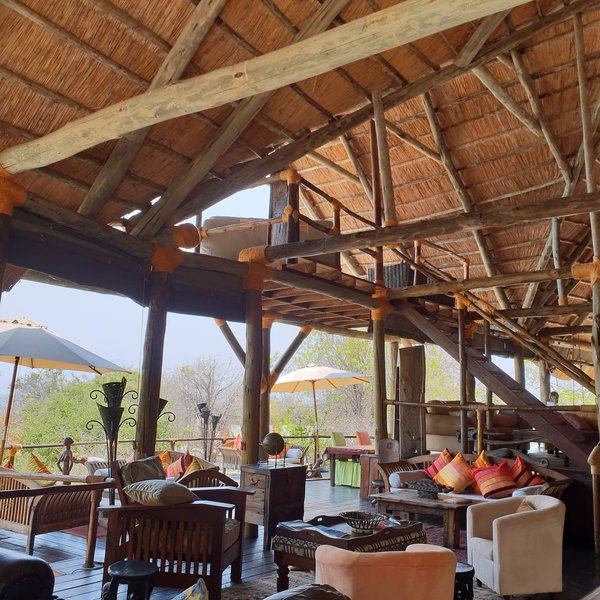

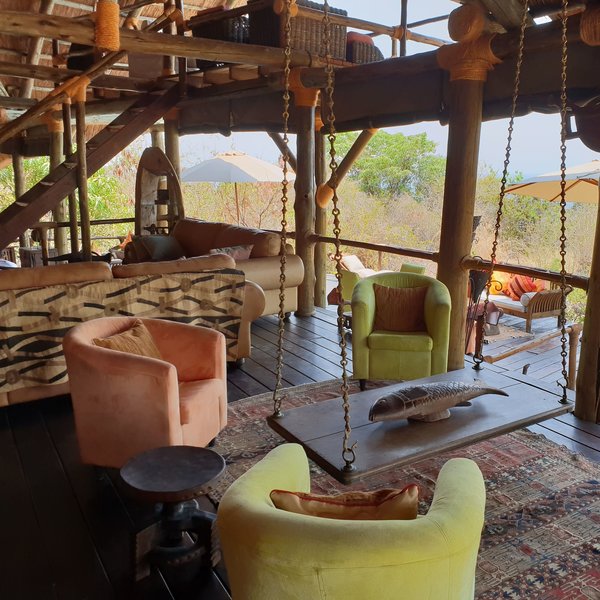
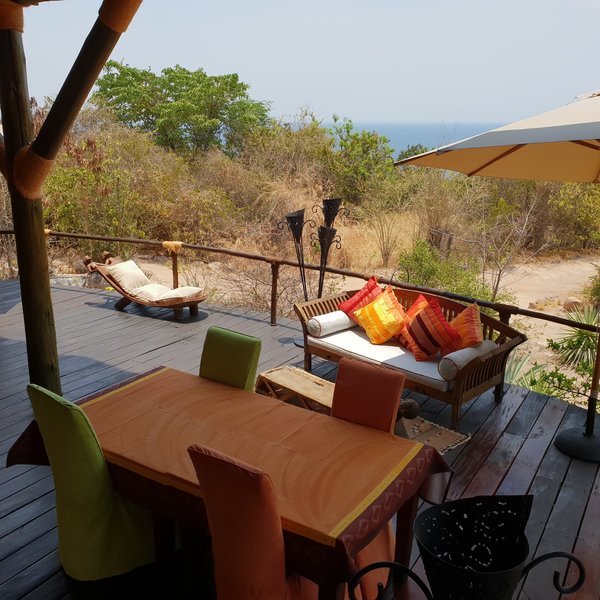
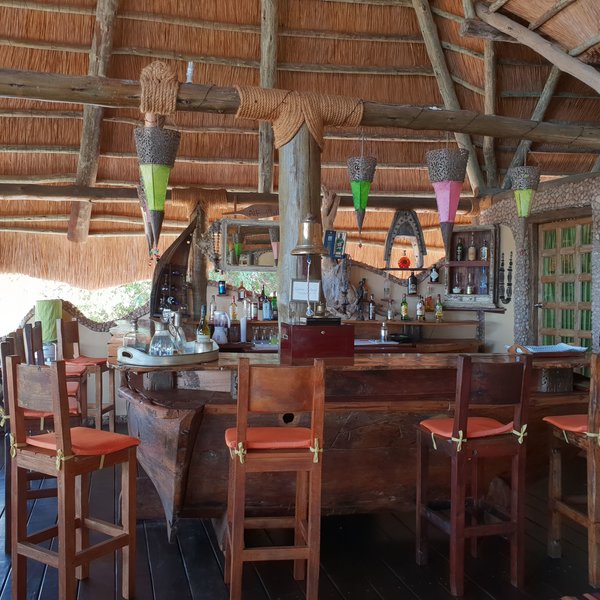
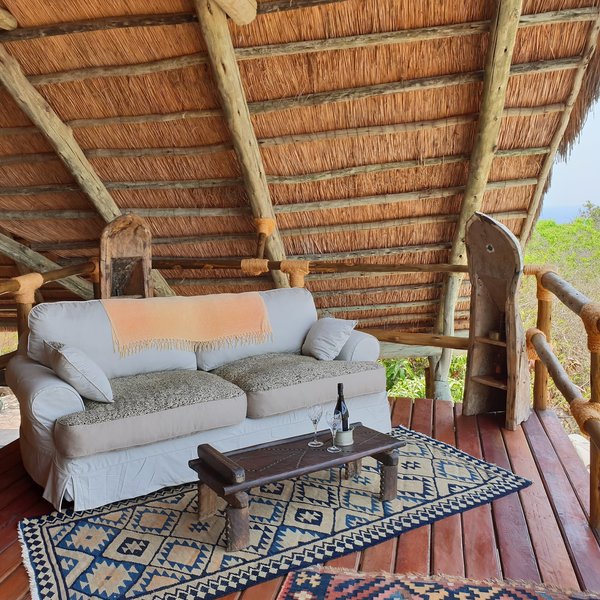
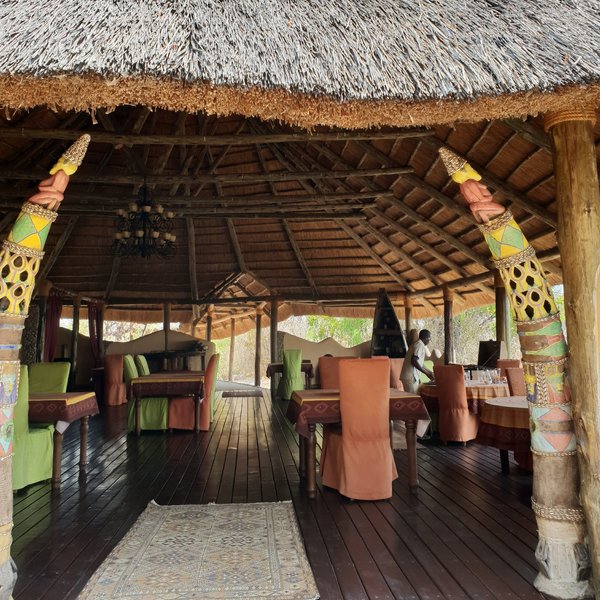
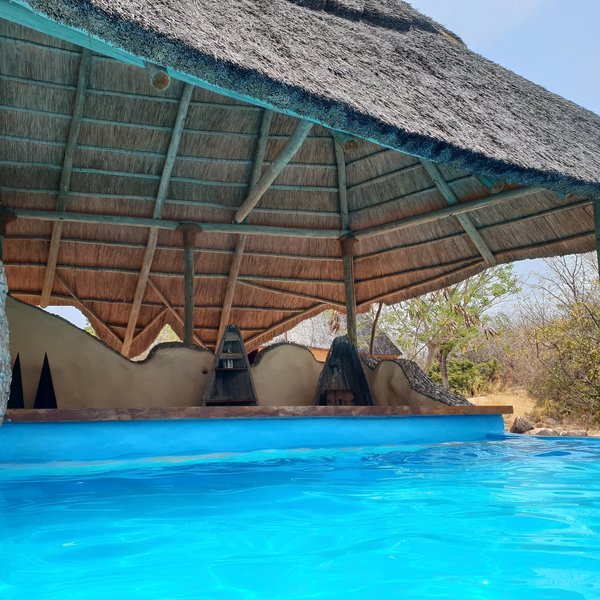
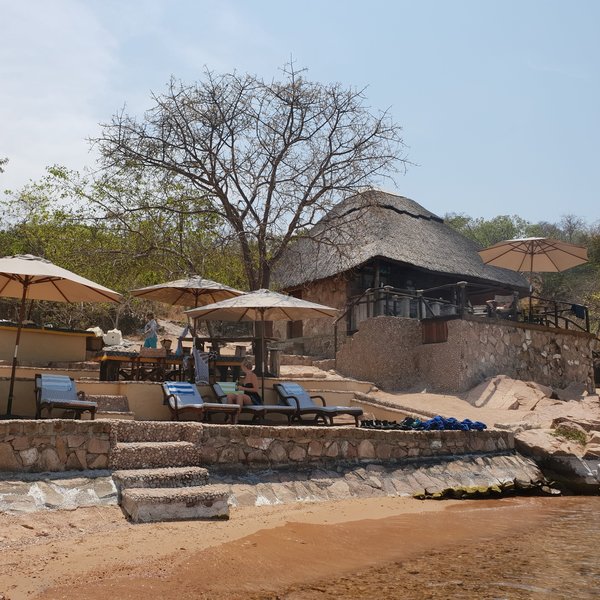
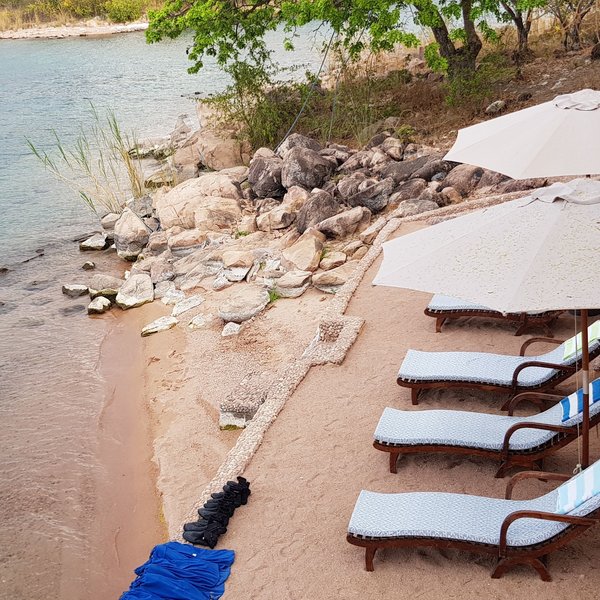
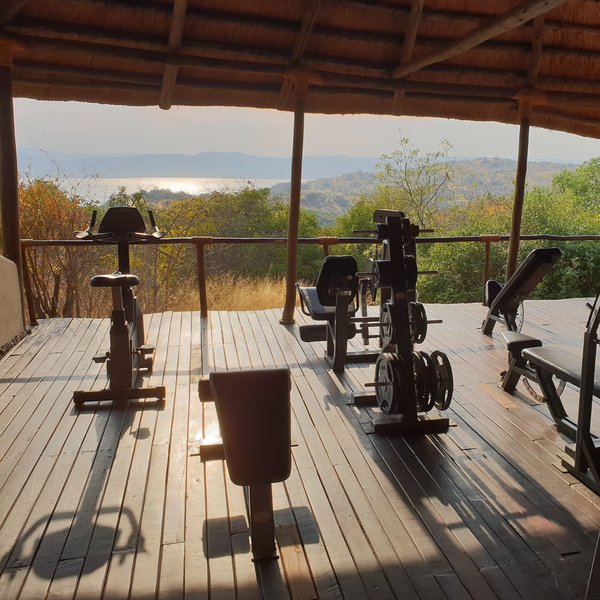
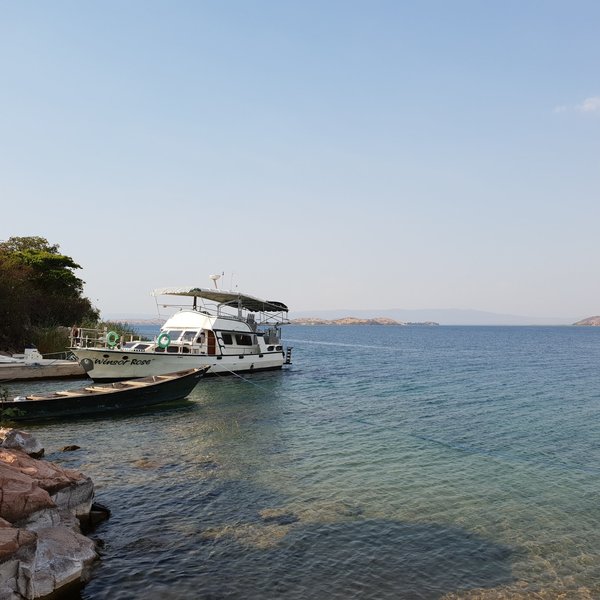
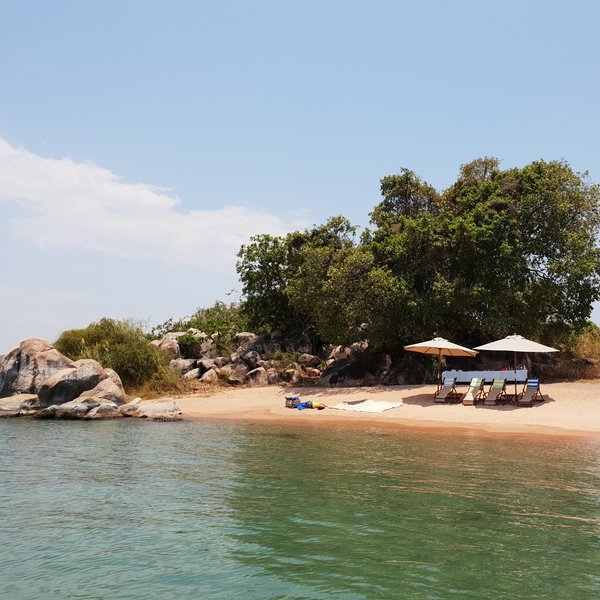
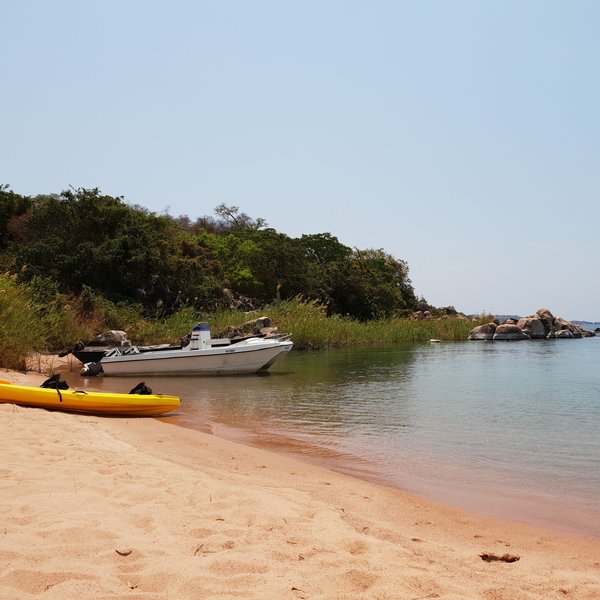
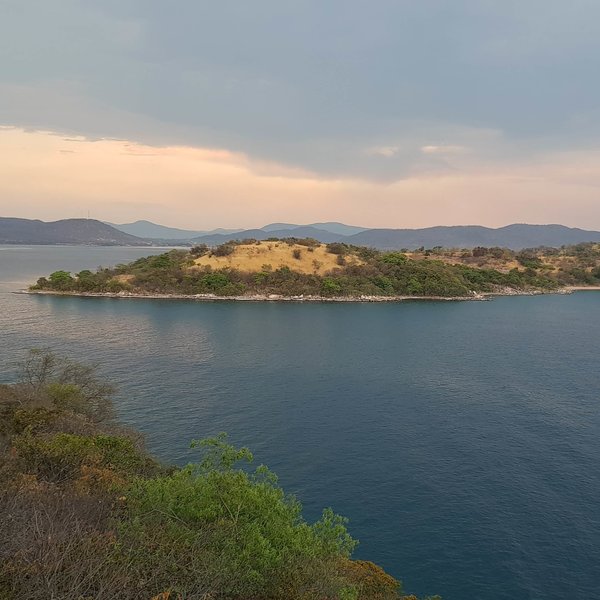
Expert Africa's gallery
When we travel we take lots of photos ourselves to give you a real and un-edited view of the holidays. See our 122 pictures of Lupita Island Lodge to get the candid view.
View galleryLupita Island Lodge: Our full report
Lupita Island Lodge is secreted on the private 45-hectare Lupita Island, part of the only archipelago in ...
... Lake Tanganyika, in western Tanzania. Reached from the remote fishing village of Kipili, west of Katavi National Park and south of the Mahale Mountains, it sprawls across the top of the island, looking out over the lake, and with a wide range of beach and island activities.
Getting to Lupita Island is an adventure in itself. After a bumpy light-aircraft approach over the mountains of mainland western Tanzania (see ‘Access directions’ for more), guests land at Kipili airstrip to be greeted by Belinda and Dave, the enigmatic owner/managers of the island. Planes don’t land here too often, so there is often a welcoming party of excited local children joining your hosts. Once on land, you’ll have a drive of around 20 minutes through the rural village of Kipili to the lakeshore, followed by a 15-minute speedboat journey to Lupita Island itself. ‘Lupita’ may mean ‘on the way to’ in Kiswahili, but this island is very much an end goal.
The island’s jetty is the location of the beach bar and a small sandy beach that was constructed by the owners - there are no natural beaches on the island. The lodge itself is at the top of the island, a rather steep walk or a fun golf-buggy ride away.
Lupita’s lounge and bar is a high-ceilinged, open-sided structure under makuti thatch, with a large west-facing deck. The eclectic mix of sofas and armchairs on two levels, along with Belinda’s exceptional collection of African artefacts, carvings and decorative antique furniture, create a homely feel, full of interest and intrigue. Rather zingy pops of tangerine and lime soft furnishings add a quirky edge to the whole look. High in the rafters, a small mezzanine floor is a perfect spot for watching the sun set over the lake, or to browse the lodge’s selection of wildlife and photography books.
This overall style of building and aesthetic continues through to a very large, separate dining room - although meals take place in a variety of locations around the main area. There is further seating here too, ideal for relaxing after dinner – or you could head for the firepit, surrounded by lounge chairs.
Facilities continue to a swimming pool, complete with swim-up bar, and on along a series of pathways to a gym, with lovely views over the lake towards the neighbouring islands, and Lupita Island’s separate thatched spa. There is also a very well-equipped games room: there are ping pong and pool tables, table football, darts and an array of board games.
More pathways wind down through the bush to 10 thatched cottages fronting the lake, each looked after by a dedicated member of staff. Ranging in size from 167m2 to 232m2, these are incredibly secluded and feel very spacious. Each is individually designed, but most are completely open on the lake side, and all feature an open-plan lounge area, king-size four-poster bed (or one twin), bathroom with twin sinks, waterfall shower and bathtub, and a deck with plunge pool. The décor is similar to the main areas, with beautiful wooden furniture made on site, as well as more antique pieces – many sourced from Zanzibar – and playful touches such as butter yellow and mint green walls. Added safari luxuries include a minibar, complimentary toiletries and hairdryer.
All the cottages have plenty of space for an extra bed or two, but there is also a particularly spacious family cottage – the Livingstone Suite. With a double room, smaller twin room, plus an extra bed – and two bathrooms – this can sleep up to five, but it is very open so would probably be best for younger families. When we visited Lupita Island in October 2018, we stayed in the Livingstone Suite, so it can also work for smaller parties wanting even more space than the norm.
As they are so private, some cottages are a bit of a stroll from the main areas – perhaps five minutes or more – with stone steps down to them. There are a couple that are more suited to those with limited mobility (Nachtigal’s Nest and Batutta’s Oasis) as they are near to the main areas, with flatter pathways and no steps. Conversely, for proximity to the lake consider Baker’s Lagoon and King Mirambo’s Boma – though these are also two of the furthest from the main area.
It’s very easy to fill your days with activities on Lupita Island. Around the lodge itself, there is the pool, gym, spa and games room, but you can also walk down to the beach – or be driven in the golf buggy. The beach itself is very small and stepped, but there is no risk of crocodiles or hippos in this area of the lake, so it’s possible to swim from here. To explore the lake, there are excellent kayaks and snorkelling equipment. We really enjoyed paddling around the island, accompanied by the watersports guide, stopping off to swim and snorkel along the way. The warm, fresh water was a delight and the fish were plentiful, although the lake can get a little choppy at times without too much warning.
Above the water, there are sailing boats for guests who have some prior experience, as well as a number of leisure boats for longer lake cruises, perhaps trying some handline fishing along the way, or heading to one of the other islands for a barbecue and beach day. We spent a great afternoon on the neighbouring island, relaxing on the beach and swimming. The staff had set up a superb buffet lunch, and had brought over a variety of beach games and a fully stocked bar too. Then at the end of the day, we were able to kayak back to Lupita.
Those interested in local culture can be taken on guided walks on one of the larger islands, passing through villages along the way. Tourists aren’t a regular occurrence here, so the children in particular tend to be hugely excited to see the visitors. There are also the ruins of a monastery that can be visited as part of a walk.
Activities
Boat trip
Cultural excursion
Fishing
Kayaking
Self-guided walking
Snorkelling
Families & children
- Attitude towards children
- Children age 7 years and above are welcome.
- Property’s age restrictions
- Minimum age 7 years
- Special activities & services
- The staff are happy to do activities with children on their own, and both menus and mealtimes can be customised. There are also good family room options.
- Equipment
- None
- Generally recommended for children
- There is so much to do on Lupita Island, at the lodge itself, in and on the lake and neighbouring islands, we think that children would struggle to be bored. Lupita Island is a great place for families.
- Notes
- The paths to the rooms are long and steep in places, and there is open access to the lake so younger children and non-swimmers should always be supervised.
Food & drink
- Usual board basis
- Full Board & Activities
- Food quality
- The food at Lupita Island Lodge is very good – plentiful, well presented, extremely varied – and clearly a lot of thought goes into the menus. The lodge is very happy to cater to dietary requirements with advance notice, as well as to tailor menus to suit particular tastes. High standards of service are expected from the staff, on which they mostly deliver, but there is the occasional prompt required. Meals are held in various locations throughout the lodge.
Breakfast is generally served outside and consists of a changing buffet of cereal, yoghurt, fruit, smoked salmon, cold meats and cheese. On the tables themselves, there’s a selection of sweet options – perhaps pancakes and muffins, or doughnuts and banana bread; Lupita has a pastry chef who makes all the cakes and pastries fresh, every day. There is also a menu of hot dishes, with ‘daily specials’ such as eggs Benedict, and healthy smoothies.
Lunch depends on the activities guests are doing that day. It might be a barbecue on the beach, a packed lunch taken out on a walk or one of the boats, or a buffet at the lodge. We really enjoyed the selection of aromatic curries one day, accompanied by rice, salads, chapattis, papadoms and a variety of chutneys.
Dinner is a four-course set menu. One evening we started with a spiced pumpkin soup and croutons, followed by chunky pancetta and vegetable spring rolls with a chilli dipping sauce. Our main course was beef fillet with green pepper cream, julienne carrots and roasted potato wedges. The meal was finished with a delicious Amarula mousse with a shot on the side. - Dining style
- Individual Tables
- Dining locations
- Indoor and Outdoor Dining
- Further dining info, including room service
- Room service is available and meals can be set up anywhere around the property – in the cottages, by the pool, out on the deck. It’s very flexible.
- Drinks included
- Most drinks are included except premium wines and spirits. Drinking water is provided in all of the cottages, as well as in the main area.
Getting there
- Location
- Lupita Island, Tanzania
- Ideal length of stay
- From 3 nights upwards
- Directions
- Lupita Island is accessed via a short drive, from Kipili airstrip, and then a speedboat ride to the island. Scheduled flights to Kipili are possible on Mondays and Thursdays only – from Dar es Salaam (via the Selous, Ruaha and Katavi), or from Arusha and the Serengeti.
- Accessible by
- Fly-and-Transfer
Special interests
- Family safaris
- Lupita Island is an excellent choice for a family holiday, especially a multi-generational or large group. With an array of activities on the island and in the lake, and great family accommodation - is a brilliant alternative to Zanzibar.
- See ideas for Family safaris in Tanzania
Communications
- Power supply notes
- There is a back-up generator and there are plug sockets in all the cottages with 24-hour power.
- Communications
- There is good cellphone reception throughout the lodge, and WiFi in the main areas.
- TV & radio
- There is no TV at the lodge but for big sporting events, guests could go to Belinda’s private house.
- Water supply
- Other
- Water supply notes
- Water is pumped up from the lake and filtered for use at the lodge. The bathrooms are fully plumbed with hot and cold water.
Health & safety
- Malarial protection recommended
- Yes
- Dangerous animals
- Low Risk
- Security measures
- Askaris (armed guards) walk guests back to their cottages when it is dark.
- Fire safety
- There are fire extinguishers in each cottage.
Useful info
- Disabled access
- On Request
- Laundry facilities
- A full laundry service is included. However, as is usual for Tanzanian camps, ladies’ underwear cannot be washed, so they provide washing powder in the bathrooms.
- Money
- There is a are lockable chest in each cottage to store valuables. There is no currency exchange facility.
- Accepted payment on location
- Additional payments are accepted in US dollars and Tanzanian shillings. The lodge does not currently have the ability to accept card payments.
Plan and book your trip with Expert Africa
All of our trips are tailor-made, so we'll always adapt them to suit you. Talk to an Expert and let us plan and arrange your perfect trip.

Talk to an Expert
Call or email us now! We’ll match you with the Specialist in our team who is best suited to help you. Then together we can start planning your trip.

Set up your itinerary
Based on our experience and your ideas, your specialist will create a detailed, costed itinerary. We’ll refine it together, until we have a trip that you’re perfectly happy with.

Prepare for your trip
The same Specialist will make the seamless arrangements for your trip, send you detailed travel documents, and be available to answer any questions before you depart.

Travel with peace of mind
After you set off, you’ll be cared for by our partners in Africa, most of whom have worked with Expert Africa for decades. And if you ever need us urgently, we’re available 24/7.

When you return
We love to learn about your trip, and so will always be grateful if you’ve the time to give feedback to your Specialist when you return.
Lupita Island Lodge's location
Look closer at the environment and surroundings of Lupita Island Lodge.
When to go to Lupita Island
Our month by month guide: What it's like to visit Lupita Island Lodge in Lupita Island
Jan
Feb
Mar
Apr
May
Jun
Jul
Aug
Sep
Oct
Nov
Dec
Tanzania in January
January usually marks the start of the short dry season, although the exact timings of this are a little unpredictable. You can expect clear blue skies and sunshine, if the short rains have stopped, and the temperatures will be building. The short dry season is a little less pronounced in Southern Tanzania, and so it can still be wet in these areas. It is an interesting time for avians as resident birds go into breeding plumage and migrant species can be present.
Once the New Year busy period has quietened down, January can offer great value and quieter parks, although the weather can be variable, and in the Selous and Ruaha the wildlife is more dispersed.
- Variable weather: clear & dry or cloudy with some rain.
- Occasional thunderstorms may occur.
- A good time of year for birding as and many migrant species are around
- The wildebeest migration is gathering in the southern Serengeti.
- Busy in early January, quietening down through the month.
Our view
A good time to visit, with pros & cons
Weather in January
Tanzania in February
February is during the short dry season and is one of the hottest months in Tanzania, with temperatures reaching around 33°Celsius. This can be a good time to visit, as some areas of the Northern Circuit are comparatively quieter than during the European summer months, and lodge rates are also a little lower.
The wildebeest will typically be on the southern plains of the Serengeti for their calving season, which tends to occur in a 2-3 week window in early-mid February – although this does vary year on year. This is also a particularly rewarding time for birdlife, as northern hemisphere migrants join the resident species.
- Hot and dry weather.
- Wildebeest migration calving on Serengeti’s southern plains.
- Ngorongoro Crater and southern Serengeti busy for the migration.
- Selous and Ruaha are typically quiet at this time.
- The parks are likely to be lush and green, leading to pretty landscape
Our view
A very good time to visit
Weather in February
Tanzania in March
The heavier ‘long rains’ start in earnest in March although exactly when varies year on year. With no need to stay close to permanent water sources, migratory wildlife disperses, and so game viewing starts to become more challenging. This is most prominently seen in Tarangire National Park. The wildebeest migration may still be calving, or have moved on into the central regions of the Serengeti.
Many of the camps in the southern parks close mid March and mobile tented camps in the Serengeti will wind down towards the end of the month in order to move location or carry out refurbishments, ready for the new tourist season.
- Hot with building humidity, before the rains begin at some point.
- Wildlife viewing is variable depending on the start of the rains.
- Parks are quiet and rates are low.
- Not great for southern or western Tanzania.
- March can be a good time for birding, with many migrant species.
Our view
A good time to visit, with pros & cons
Weather in March
Tanzania in April
April is in the middle of the long rainy season and is the wettest month, with on average 250mm of rain. Temperatures are fairly high and humid in comparison to the rest of the year. Expect the bush to be lush and flowering, and alive with insects, birds and smaller animals. It is however also dense, allowing wildlife to hide, which in turn makes game viewing harder. This is a very quiet time in terms of visitor numbers.
Many of the tented camps are closed in April, however the larger lodges remain open. The rates are significantly cheaper, and so if you are willing to work harder to spot the bigger game, some accommodation bargains can be had.
- Heavy rain expected, with impressive thunderstorms and lightning.
- Many camps closed and roads impassable due to ground conditions.
- Rates are at their lowest all year round, with very few other tourists
- Places that are open are green and vibrant, wildlife more dispersed.
Our view
This is not a great time to visit
Weather in April
Tanzania in May
As Tanzania is close to the equator there is no dramatic difference in climate throughout the year, but temperatures do start to drop a little in May. The rains are likely to still be present, although potentially clearing towards the end of the month. Visitor numbers and lodge rates are still low. The wildebeest migration is making its way through the western regions of the Serengeti, crossing the Grumeti River.
Virtually all camps in southern Tanzania remain closed, and many of the roads and tracks in the Selous become impassable.
- Heavy rains and storms are likely, this can create some dramatic skies
- Blissfully quiet in northern Tanzania, and a good time to avoid crowds
- The parks are likely to look lush and green, with long grass.
- Wildlife is likely to be more dispersed, with fewer sightings.
- The low prices make safaris much more affordable at this time.
Our view
This is not a great time to visit
Weather in May
Tanzania in June
The rains come to an end at some point during the month and migratory wildlife begins to be drawn back to perennial water sources as the land starts to dry up. It’s likely that the parks will still be quite green and the grass high though, so walking and fly-camping may be unlikely. This marks the start of the season with camps reopening, but prices are still more affordable than the subsequent months.
The migration may still be in the Western Corridor, or on the move northwards towards the Mara River. Western Tanzania presents more challenging conditions for chimpanzee trekking in Mahale National Park, as the chimps are higher in the mountains.
- Variable weather: clear & dry or cloudy with some rain.
- A transitory time for the migration – moving from west to north.
- The parks may still be quite green, and grasses high.
- Wildlife may be dispersed still.
- Relatively low visitor numbers and good value, shoulder season prices.
Our view
A good time to visit, with pros & cons
Weather in June
Tanzania in July
July is considered to be the start of the peak season, with no rainfall expected and pleasant daytime temperatures. As the parks dry, the wildlife congregates in fewer areas, grass is eaten and trampled by the migration, and game viewing gets better and better. The wildebeest are typically arriving in the northern Serengeti, ready to begin their period of crossings of the Mara River.
In the Selous and Ruaha wildlife sightings can be fantastic, with animals gathering around the lakes and rivers. Great conditions and school holidays mean the parks are at their busiest, with Ngorongoro and the Serengeti particularly crowded.
- Dry and warm daytimes, chilly and windy in the mornings and evenings.
- Great wildlife viewing, as water sources diminish.
- The most popular time of year with very high visitor numbers.
- Prices are at their highest due to the great conditions on the ground.
- To avoid the crowds consider Tanzania’s southern parks.
Our view
Fantastic: the very best time to visit
Weather in July
Tanzania in August
August is the middle of the long dry season, with clear skies and sunny weather. You can expect some cooler weather at night and first thing in the morning. Remember to pack layered clothing, so you can wrap up warm on your early morning game drives, but remain comfortable as it heats up throughout the day.
August is a very popular time to visit, so accommodation prices are at their highest and advanced booking is necessary. It can get noticeably busier in some of the northern parks – in particular the Ngorongoro Crater and northern Serengeti, as visitors flock to the area in hope of witnessing an exciting migration river crossing.
- Dry and warm daytimes, chilly in the early mornings and evenings.
- General wildlife viewing should be excellent.
- An exciting time of year for the wildebeest migration.
- Certain areas will be very busy and camps fill up fast.
- Great wildlife sightings in the Selous and Ruaha, and fewer people.
Our view
Fantastic: the very best time to visit
Weather in August
Tanzania in September
September can be an excellent time of year to visit Tanzania. As the parks continue to dry up the wildlife becomes increasingly reliant on the remaining water sources, leading to high densities of animals. Whilst early September can be busy, with fewer families traveling at this time the parks typically become quieter as the month goes on.
You are still likely to see the wildebeest migration in the northern Serengeti, with river crossings occurring on a regular basis. Tanzania’s southern parks are also fantastic at this time of year, generally receiving far fewer visitors than the north, and wildlife sightings can be great. Prices remain high and the weather generally remains good.
- Wildlife viewing in September can be fantastic.
- Whilst still fairly busy, often the parks are typically a little quiet
- The parks will start to become very dry, with little new vegetation
- Cooler mornings and evenings, warming up during the day.
- Prices remain high.
Our view
Fantastic: the very best time to visit
Weather in September
Tanzania in October
At the tail end of the dry season, the wildlife should be the easiest to spot, although photographers should be aware that it can be a bit dusty at this time of year, as there has been no rain for several months. Great general wildlife viewing throughout as animals are attracted to remaining sources of water. Elephant numbers are particularly high at this time in Tarangire, and Mahale and Katavi are especially rewarding with frequent wildlife sightings close to camp.
There is a chance of rainfall towards the end of the month, if the short rains commence. While prices remain high, visitors numbers are significantly lower than in July-August.
- Mostly dry and temperatures comfortably warm, with the chance of storm
- Great game viewing although the landscape can be a bit barren.
- Much lower visitor numbers than the earlier months.
Our view
A very good time to visit
Weather in October
Tanzania in November
In November you can expect the start of the short rains, although the start date varies every year. The rains are highly localised, and are much lighter and more unpredictable than the long rains that occur earlier in the year. These should not really interfere with your safari – as the game viewing at this time is still good - but you should pack a waterproof jacket and be prepared for some short rain showers!
The majority of tented camps remain open, but some of the mobile camps in Northern Tanzania will close for the latter half on the month. Given the seasonality, camps are charging shoulder season rates so there are often some bargains to be had. Early November can offer great value for money and the weather conditions are likely to be comparable to late October.
- Variable weather: clear & dry or cloudy with some rain.
- Parks are comparatively quiet and prices at the lower end.
- Some camps will close towards the end of the month for maintenance.
- Good wildlife sightings, but animals will disperse when rain starts
- The wildebeest migration is on the move and the location unpredictable
Our view
A good time to visit, with pros & cons
Weather in November
Tanzania in December
December is also during the short rainy period, but this does not stop Tanzania being a popular destination to spend the festive period. Be aware that many of the lodges book up early, and charge peak rates over this time. Advanced booking is essential over this period, especially if travelling in larger family groups.
Travelling in December outside of the festive period allows travellers to make use of excellent shoulder season rates. Temperatures are pleasant with the averages of 27Celsius, although there is the chance of intermittent thunderstorms.
- Variable weather:clear & dry or cloudy with some rain and thunderstorm
- Good general game viewing in parks with low seasonality - Serengeti.
- Very quiet early in the month, becoming exceptionally busy.
- Prices reflect this – great value rising to the highest they are.
- The wildlife in southern Tanzania is more dispersed.
Our view
A good time to visit, with pros & cons
Weather in December

Looking for inspiration on where to travel next?
Visit our trip chooser to explore your options and find inspiration for your perfect African adventure
Inspire me